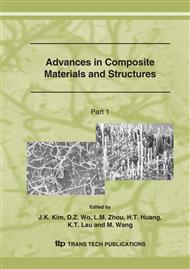p.133
p.137
p.141
p.145
p.149
p.153
p.157
p.161
p.165
Electrical Properties of Hot Press Sintered NASICON Ceramics
Abstract:
Sodium superionic conductor, NASICON ceramic (Na1+xZr2SixP3-xO12, x=2), was hot-press sintered under different temperatures and the electrical properties of the obtained different samples were investigated. Results show that the relative density of the ceramics can be improved by hot-press process efficiently and the crystal size of the samples are closely related to sintering temperature. With the increase of sintering temperature, both the density and the crystal size of samples increase obviously, resulting in the increase of ionic conductivity of samples as the sintering temperature. When the sintering temperature reaches 1150oC, the ionic conductivity of sample is as high is 3.6×10-3S/cm, which is obviously higher than that of sample sintered at 1000oC (2.13×10-3S/cm). As the frequency increase, the real parts and the imaginary parts of complex dielectric constants for all the samples decrease in 8.2 GHz~12.4GHz frequency band. The ceramics obtained at the higher temperature possess the higher dielectric constant.
Info:
Periodical:
Pages:
149-152
Citation:
Online since:
March 2007
Authors:
Price:
Сopyright:
© 2007 Trans Tech Publications Ltd. All Rights Reserved
Share:
Citation:


